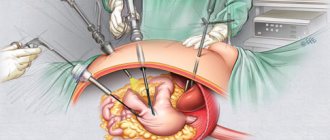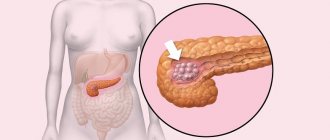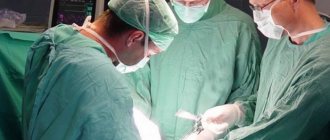The stomach cancer survival statistics provided in this article are very general. The numbers in these statistics cannot accurately predict what will happen to a particular person. In real life, you may encounter serious deviations from the average in one direction or another. There are examples of how people in the later stages survived despite all statistical data, or, having undergone poor-quality treatment, died at those stages when recovery was very real. An exact answer to the question “how long do people live with stomach cancer?” no, but it is definitely possible to answer positively the question “is it possible to cure stomach cancer?”
Survival for stomach cancer primarily depends on the stage of the disease at which the disease was detected, on the quality of treatment, and also on such things as the desire and ability of the patient to fight the disease.
Indications and contraindications for surgery
The oncological process in the stomach rarely develops spontaneously. It is usually preceded by precancerous diseases, such as polyposis, ulcers or gastritis. Patients who have a chronic course of these pathologies attribute the appearance of new symptoms to an exacerbation of the disease and do not consult a doctor. That is why most surgical interventions are performed when the cancer has reached stage 2 or 3. The decision to perform an operation is made if during FGDS and other examinations the following indicators are detected:
- Total or local damage to the stomach by a tumor without distant metastases.
- Germination of a neoplasm of the cardiac part onto the lesser curvature and body of the stomach.
- Multiple organ damage by tumors or polyps.
- Cancer growth into the liver, pancreas, transverse colon or mesentery.
The doctor's increased attention is paid to patients who complain of stable hyperthermia, sudden weight loss, frequent heartburn, as well as vomiting, often mixed with blood, after which relief occurs. Stagnation of food inside the organ leads to rotting processes and the appearance of an unpleasant odor during belching, pain and increasing intoxication. Often the patient's condition or the presence of concomitant pathologies makes surgical intervention impossible. Conditions such as:
If the patient has bleeding disorders, then surgery to remove the tumor cannot be performed.
- cancer with metastases to distant organs and lymph nodes;
- ascites;
- heart defects;
- uncontrolled hypertension;
- endocrine diseases;
- severe forms of renal and liver failure;
- bleeding disorders.
Reasons for development
Features of the disease
Despite all the possibilities of modern medicine, it has not been able to give an exact answer as to what can cause stomach cancer, which reaches stage 3. Nevertheless, scientists were still able to determine the cause-and-effect relationship with an unhealthy diet containing large amounts of smoked, pickled and salty foods. But at the same time, billions of people on the planet eat this way, but do not get cancer. The fact is that this factor only increases the risk of developing pathology.
There is a theory that explains the onset of cancer by hereditary predisposition. But the most serious provocateurs are still carcinogenic substances. When they enter the human body, they are capable of causing DNA mutations, and this is the beginning of the malignancy of absolutely healthy cells.
What types of operations are performed for gastric cancer?
Depending on the location of the cancer, its structure, size and presence of metastases, various surgical techniques are indicated. If the tumor is localized in a certain part of the stomach and has not grown into neighboring organs, then resection of 2/3 or ¾ of the organ is performed. Complete gastrectomy is indicated for massive lesions involving the duodenum or esophagus. Stage 2 cancer with metastases to the lymph nodes requires lymph node dissection. In this case, the affected lymph nodes, vessels and fat layer are removed along with the stomach.
Stomach cancer stages 3 and 4 are considered inoperable conditions. In this case, to prolong the patient's life and reduce his suffering, a gastrostomy tube is applied to avoid irritation and food damage to the cancerous tumor.
Stomach cancer stage 1
The first stage is early cancer, when the tumor has not violated the boundaries of the mucous membrane, but its length can be several centimeters, the main thing is that the cancer cells have not spread into the depths of the gastric wall.
Possible distribution options:
- The neoplasm is very tiny - exclusively within the mucous membrane, this is subgroup “A” of the first stage, or IA for short;
- The neoplasm is just as tiny, but there are already metastases in one or two lymph nodes - subgroup “B” of the first stage, or IB for short;
- The neoplasm spreads to the underlying layers of the mucous membrane, but the lymph nodes are free of cancer cells - also IB.
The operation allows almost 95% of patients to continue living without any fears and, importantly, in most cases there is no need for postoperative preventive chemotherapy.
Postoperative rehabilitation
Rehabilitation after surgery includes not only diet, but also taking medications that eliminate nausea and painkillers.
The patient's recovery after gastric resection is long. It consists of following a diet, undergoing a course of chemotherapy, radiation therapy or targeted treatment. Immediately after the operation, the patient is prescribed painkillers, vitamins B1, B6, C, folic acid, drugs against nausea, diarrhea and normalization of blood pressure. As for nutrition, 48-72 hours after resection the patient begins to be given liquid food and water, while monitoring the functioning of the stomach and intestines. When stool appears and normalizes, pureed lean soups and cereals can be introduced. Frequent split meals should consist of easily digestible, high-calorie foods high in protein, carbohydrates and animal fats. Fried foods, any spices and marinades are strictly prohibited. To correct metabolic disorders, replacement or enzyme therapy is prescribed depending on the acidity of gastric juice.
1-1.5 months after the operation, you can begin the first course of rehabilitation measures, for example, physical therapy, breathing exercises, electrosleep, EHF therapy, balneotherapy. This will shorten the rehabilitation period, activate the secretory and motor functions of the digestive organs, strengthen the abdominal muscles, and normalize the functioning of the cardiovascular and respiratory systems.
What can be done at the penultimate stage of the disease?
If you are interested in how long people live with stage 3 digestive cancer, then you should understand that survival rates under such circumstances drop sharply. Only 15-38% of patients reach the five-year mark, it all depends on the tumor subtype.
As for treatment, patients in this category are considered inoperable. They are treated with supportive therapy designed to prolong life and improve its quality. However, it is worth noting that each case is individual, and sometimes even at stage 3 of the development of pathology, surgical intervention can be performed.
The main method of treatment is chemotherapy. It is used as a means of increasing the effectiveness of surgery, as well as as an independent treatment. The essence of the method is that special chemical drugs are administered orally, intravenously or intramuscularly into the patient’s body. These substances destroy cancer cells in any part of the body. This treatment method is very effective, but at the same time has many unpleasant side effects. Patients who want to alleviate their condition at least a little are ready for anything. They have to put up with constant nausea and vomiting, hair loss, lack of appetite and weight loss. The following drugs are considered the most effective today:
- trastuzumab;
- imatinib;
- sunitinib.
Chemotherapy courses for stage 3 stomach cancer are sometimes the only way to save life.
Radiation therapy can be used to target the tumor. It consists in the fact that a beam of X-rays is directed at cancer cells, capable of destroying them. Thus, it is possible to reduce the size of the malignant tumor, thereby relieving the patient of painful symptoms. In most cases, radiation therapy complements chemotherapy.
Order a cost estimate for treatment in Israel
What postoperative complications may occur?
Unfortunately, a 100% cure for cancer is not always possible, especially if the disease was diagnosed at stage 2 or later. Yes, the tumor is removed - the main problem, but other pathological processes may develop that disrupt the patient’s normal lifestyle. Common complications after gastrectomy of any complexity include:
Partial or complete removal of the stomach is often accompanied by complications, one of which is bloating.
- anemia;
- metastasis;
- bloating and abdominal pain;
- dumping syndrome;
- esophagitis;
- stump gastritis;
- anacid and hypoacid state;
- colitis;
- diarrhea;
- peritonitis.
https://youtu.be/obNO7QdCKxY
Diagnostics
Patients suspected of having stomach cancer should undergo a comprehensive examination, which will not only detect the tumor, but also determine the stage of the disease. Typically, the diagnostic process includes the following procedures:
- Fibrogastroscopy - allows you to examine the walls of the stomach from the inside, detect a neoplasm, its location and size, and also take a biopsy for further morphological examination.
- X-ray examination with barium contrast. Allows you not only to visualize the tumor, but also to determine the dysfunction of the stomach.
- Ultrasound and CT. These methods allow you to determine the extent of cancer. With their help, the stage of the disease is determined, the extent of damage to neighboring organs is determined, and regional and distant metastases are looked for.
- The final stage is diagnostic laparoscopy, a minimally invasive operation that examines the abdominal cavity for the presence of metastases and dissemination of cancer throughout the peritoneum.
Forecasted risks
The disease can affect all segments of the population, regardless of gender and age. According to research conducted by the World Health Organization, it affects about a twelfth of the population, to varying degrees of severity. To make a prognosis for the course of the disease, you need the opinion of a highly qualified gastroenterologist. Based on all available data, the specialist draws conclusions about the patient’s current condition, gives an opinion on how much the disease complicates the medical history, and whether the disease will proceed safely or be accompanied by a set of complications.
There is no data on a decrease in life expectancy, provided that the recommendations of specialists are followed and the prescribed treatment is maintained.
The prognosis worsens as you move through the age group. Metaplastic processes occur much more rapidly and lead to malignancy in the vast majority of cases.
People over 50 years of age suffer from complications much more often than younger people.
Diet for atrophic gastritis: what you can eat and what you can’t
Doctors have developed a special diet for this disease. This diet is designed specifically for low acidity. Treatment of atrophic gastritis with high acidity requires a slightly different diet, discuss it with your doctor.
What you can and cannot eat with gastritis
The diet is presented in the form of a set of rules for permitted and prohibited foods and is compiled according to the following principles.
- Elimination of foods that can cause fermentation in the stomach.
- Avoiding coarse fiber in any form.
- Heavy foods, fatty, smoked, salty, anything that requires significant effort on the part of the digestive system to process it should also be excluded from the diet.
Important! For any type of gastritis, drinking alcohol is strictly prohibited. Even a little on holidays! The changes caused by alcohol consumption are irreversible.
Milk and vegetables fit perfectly into your diet
At the same time, the list of permitted products is also very extensive:
- Any lean bird is allowed and even recommended. In case of serious gastric lesions in poultry, choose the least fatty areas (breast) and avoid the skin. If you have problems digesting even such light meat, grind it according to the rules of baby food.
- Lean fish is also allowed, but watch the bones carefully.
- Milk with a low fat content will fit perfectly into the patient’s diet.
- Vegetables and fruits can be eaten raw or baked. But be sure to wash them thoroughly under running water!
- Pasta and bread (white). The only thing you need to know is that it is better to eat white bread not fresh, but slightly dried. However, any types of rye bread are prohibited.
- Cereals.
- Eggs (no more than two per day).
Factors on which life expectancy will depend
The life expectancy of cancer patients depends on various factors, and it is impossible to predict the survival of a particular patient with one hundred percent probability, even with the maximum amount of diagnostic data, because each case is individual. But doctors identify several parameters on the basis of which an approximate forecast of five-year survival is made:
- location of the tumor on the stomach: a neoplasm in the distal section (lower half of the organ) gives patients a 50% chance of five-year survival, while cancer of the proximal (upper) section – on average no more than 15%;
- tumor size;
- type of tumor (superficial, polypoid, plaque-like, ulcerated);
- patient's age;
- the patient has concomitant diseases;
- stage of the disease at the time of treatment.
The leading factor in predicting survival is the stage of the disease at which the necessary treatment was started.
Prevention and treatment
Stomach cancer diagnosed at stages 0-1 can be eliminated through chemotherapy. The life span of such patients is very long; from the moment the disease is detected, they can live 10-15 years. Sometimes patients live to a ripe old age.
Detection at stages II-III requires surgery and chemotherapy. The patient must follow a strict diet for the rest of his life and undergo therapy every prescribed period.
Stage IV of the disease, when metastases occur, requires an intensive course of treatment, sometimes several operations. The success of such treatment is not guaranteed, and the survival rate is extremely low.
As a preventative measure for cancer patients, certain procedures are established:
- timely visits to doctors;
- undergoing chemotherapy;
- healthy lifestyle;
- taking prescribed medications.
It is extremely difficult to predict the time of return of the disease, as well as the patient’s life expectancy, since each clinical picture has an individual structure. It is necessary to carefully monitor your own physical condition, do not ignore the presence of even the simplest disorders in the functioning of the stomach, and undergo examinations on time.
Modern medicine is able to overcome this disease only if the patient follows all medical instructions and undergoes all necessary procedures.
Stomach cancer is dangerous not only as a malignant neoplasm, but also because of its complications, which pose an immediate danger to the patient’s life. The most common complications of stomach cancer that can cause the death of a patient are perforation or perforation of the tumor, blocking the lumen of the stomach (stenosis) and bleeding. The most important factors for the successful treatment of this cancer are early diagnosis, determination of its degree, radiation and chemotherapy after surgery, ensuring a positive prognosis for patients.
How long do people live with this disease?
As noted above, the duration and quality of life of the patient directly depends on the stage at which the disease was detected. In the presence of stomach cancer, life expectancy for men is reduced by 12 years, and for women by 15 years.
If the disease is detected at stage 1, the survival rate in the first 5 years is about 80%. At stages 2 and 3, this level drops to 15-40%. The most severe stage is 4, leaving a chance of survival in only 5% of cases. At the last stage, metastases already occur. How long a person with a tumor will live is determined individually.
At the moment, methods are being actively developed that make it possible to detect oncology at the stage of conception. For these purposes, special tumor markers are used, which make it possible to determine the patient’s condition based on the composition of the blood. Additionally, gastroscopy may be prescribed.
Causes of the disease in women and men
The exact cause of cancer has not been established. Today, the scientific world has adopted the mutation theory of cancer development as a basis: as a result of the influence of a number of external and internal factors, a genetic failure occurs in a healthy cell, and the resulting mutant cell begins to divide uncontrollably.
The pathological process is based on the failure of the immune system, due to which the altered cells are not removed from the body and begin to multiply vigorously, forming a tumor.
Stomach cancer, like other types of oncological pathology, is not an infectious disease, and therefore does not pose a danger to others.
Risk factors (predisposing factors):
- Genetic predisposition (history of stomach cancer in close relatives)
- Background (pre-tumor) pathologies of the stomach (peptic ulcer, polyposis, hypertrophic and Achilles gastritis)
- Irrational, irregular and poor quality nutrition with a predominance of salty, fatty, fried, smoked, starchy foods and a lack of plant, dairy and whole grain products
- Unfavorable environmental conditions, poor-quality drinking water with high salt content
- Radioactive radiation
- Occupational hazards, unfavorable working conditions
- Long-term stress
- Smoking, alcoholism
- Uncontrolled use of medications
All these factors, especially when combined, increase the risk of developing the disease.
Enzyme therapy
With gastritis, the production of substances that activate the action of enzymes is disrupted; in addition, the synthesis of enzymes is reduced, which leads to digestive disorders. Enzyme preparations improve digestion, reduce flatulence and bloating, and improve the overall well-being of patients.
Enzyme therapy for chronic atrophic gastritis includes:
- Preparations containing pepsin promote the breakdown of proteins (Pepsin K, Acidin-pepsin) and are used as replacement therapy for atrophic gastritis.
- Pancreatic enzymes containing trypsin, amylase, lipase (Mezim, Creon). These drugs eliminate nausea, bloating, and flatulence.
- Combined preparations containing pancreatin, supplemented with hemicellulose, bile (Festal, Panzinorm). These drugs are usually used for hypoacid gastritis.
- Combined enzymes with the addition of plant enzymes and vitamins to pancreatin (Wobenzym). Wobenzym contains: amylase, lipase, pancreatin, trypsin, chymotrypsin, bromelain, papain, rutin. Wobenzym stimulates the activity of macrophages against pathological cells, thereby preventing the formation of tumors. These properties determine the use of Wobenzym for atrophic gastritis.











